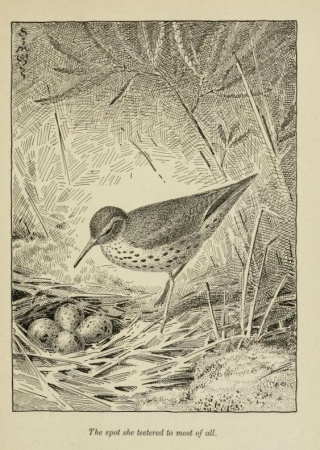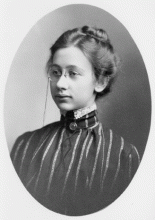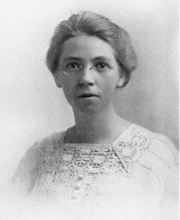Edith Patch
- Several aphid species were named for Edith Patch, including Thecabius patchii and Eriosoma patchia, and the Patchia genus was also named for her?
- Edith invited Ann Haven Morgan to Edith's first meeting as President of the Entomological Society of America?
- Edith traveled to 44 states, Canada, Mexico and Berlin?
- Harry Comstock used part of Edith's doctoral thesis in his book, Introduction to Entomology?
- Edith enjoyed helping others by identifying aphid specimens they sent her?
-
When Edith worked with the Comstocks, Anna told Edith she should write children's books, and in the 1930's Anna did, in addition to doing radio broadcasts in 1936 about entomology meant for laypersons to enjoy;
Edith's frequent nature observations and love of writing for children led to her writing Bird Stories (1921) and Desert Neighbors (1938) as introductions to science for young people? - Dr. Patch delivered a speech at the 1936 meeting of the Entomological Society of America called, "Without Benefit of Insects," in which she urged the protection of insects and predicted that by the year 2000, if the heavy use of pesticides continued, bird species and insect pollinators would be dying out?
- 1876 Edith is born in Massachusetts.
- 1884 Edith begins studying zoology and entomology by observing nature outside her new home in Minnesota.
- 1897 She goes to the University of Minnesota to study English and becomes friends with the famous Comstocks.
- 1901 Edith graduates from the University of Minnesota and begins looking for entomology jobs; initially unsuccessful at finding an entomological job, Edith teaches high school.
- Edith is finally granted a position as assistant to Charles D. Woods, director of the Maine Agricultural Experiment Station; Woods helps her get a job teaching entomology, and agricultural English, at the University of Maine.
- 1904 Edith becomes the head of the Department of Entomology at the University of Maine, a position she maintains for the rest of her life.
- 1910 She receives her master's degree from the University of Maine in entomology, then goes to Cornell to pursue her doctorate, working under Harry Comstock.
- 1924 Edith becomes head of the Maine Agricultural Experiment Station.
- 1926 She is appointed to the Committee for Nomenclature in the American Association of Economic Entomologists.
- 1927 Edith is a guest researcher for 6 months at Rothamsted Experiment Station in Harpenden, England.
- 1930 Edith is elected president of the Entomological Society of America.
- 1937 She retires and is given an honorary doctorate from the University of Maine.
- 1937-1938 Edith is president of the American Nature Study Society.
- 1940 Edith is elected to Sigma Delta Epsilon, a woman's scientific fraternity.
- 1954 Edith passes away.
Edith Patch (1876-1954) was born in Massachusetts. When her family moved to Minnesota in 1884, she studied bodies of water, different natural environments, plants, animals and birds.
In 1897, she went to the University of Minnesota to study English, and after graduating in 1901 she sought entomology jobs. She was discouraged from entering this field because she was a woman, but finally Dr. Charles D. Woods, director of the Main Agricultural Experiment station, offered her a position as an unpaid assistant. Edith took the position and soon Woods made sure she got a salary as an entomology, and agricultural English, teacher at the University of Maine.
Edith was well-known for economic entomology, but continued to pursue additional education, receiving a master's degree from the University of Maine in 1910. After this, Edith was thrilled to work with Harry and Anna Botsford Comstock as she pursued her doctorate at Cornell.
After getting her doctorate, Edith wrote many articles, studied, and discovered new species of aphids. Edith created one of the most comprehensive aphid collections in the world at the Maine Agricultural Experiment Station (of which she became the head in 1924--the first woman to do so). In 1938 the Maine Agricultural Experiment Station published her important work, Food Plant Catalogue of the Aphids of the World.
Edith was bestowed with many academic and scientific honors, and during her life she sold more than 2 million of her books, including children's books.




